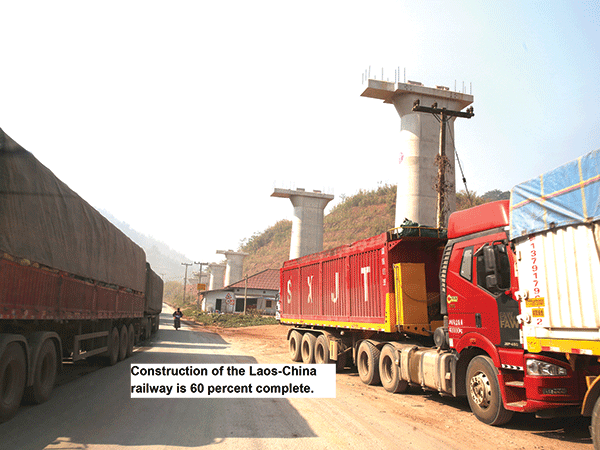Laos to seize opportunities offered by Laos-China railway

The government of Laos has acknowledged that it needs to be well prepared to provide transit services in an effort to benefit from the Laos-China railway.
Minister of Planning and Investment Dr Souphan Keomixay told Vientiane Times recently that the government is encouraging private enterprises to develop infrastructure and other facilities along the rail route.
These include the development of tourism sites and industrial parks as well as trade facilitation-related projects to capitalise on the potential of the US$5.9-billion project.
Economists have queried what products Laos should produce and how it can serve as a distributor for the region when the major interconnecting railway become operational.
Lao exports are less competitive due to the high cost of transport. The cost of production in Laos is already the equivalent of a similar Thai product landed in China, according to the minister.
Once the Laos-China railway is completed in 2021, the cost of transport will be reduced by 30-40 percent compared to current road transport.
“We need to have both short- and long-term plans to develop infrastructure and facilities to accommodate the inflow of goods and visitors to Laos. We need to ensure quicker trade facilitation and transit services so we can benefit more from the railway,” Dr Souphan said.
Located in the centre of mainland Southeast Asia, the nation shares a border with the major economies of China, Vietnam and Thailand. Without the infrastructure and facility development to accommodate the railway, Laos can be only a transit country with goods and people passing through with less local benefit.
If the country can prepare well and offer transit services, more benefit will come from the railway, linking Vientiane to the Laos-China border over a distance of 414km.
The railway is part of the government’s efforts to transform Laos from a land-locked to land-linked country which will help reduce production costs for exports to international markets.
Concerning tourism sites, the government signed memorandums of understanding with private companies to develop four tourism projects in Vangvieng district, Vientiane province. Those projects are in the process of a feasibility study.
The government is also encouraging Chinese entrepreneurs to invest in the agriculture sector for export to China, particularly organic crops.
“We have to amend our laws and improve the business climate to attract more investment to Laos so that more products can be exported,” Dr Souphan said.
The rail track will run from the Chinese border to Vientiane, passing through the provinces of Luang Namtha, Oudomxay, Luang Prabang and Vientiane. The project started construction in 2016.
The railway in Laos will link with the track in Thailand to form part of the regional rail link known as the Kunming-Singapore railway, covering a total distance of some 3,000km.
Editor: John Li